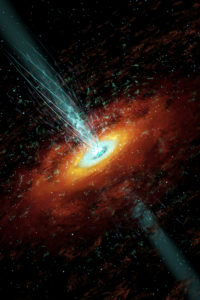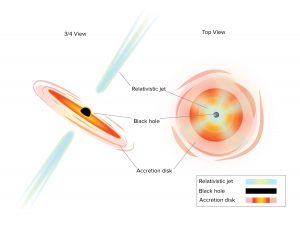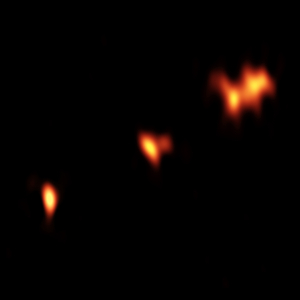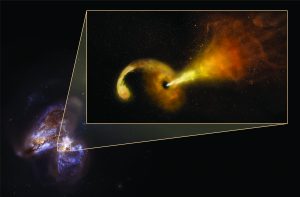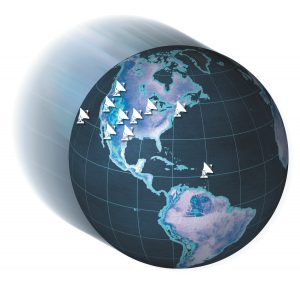Using data from ALMA, a team of astronomers studied the growth and evolution of bubbles of hot plasma produced by active quasar HE 0515-4414. The bubble was analyzed by observing its effect on light from the cosmic microwave background. It is the first time this method was used to study quasar dynamics.
Trans-galactic Streamers Feeding Most Luminous Galaxy in the Universe
New ALMA data reveal distinct streamers of material being pulled from three smaller galaxies into the larger galaxy W2246-0526, the most luminous known galaxy in the universe.
VLA Gives Tantalizing Clues About Source of Energetic Cosmic Neutrino
The track of an elusive, energetic neutrino points to a distant galaxy as its source and VLA observations suggest high-energy particles may be generated in superfast jets of material near the galaxy’s core.
Distant Quasar Providing Clues to Early-Universe Conditions
The sharp radio “vision” of the VLBA gives astronomers a detailed look at a galaxy as it appeared when the Universe was a small fraction of its current age, giving clues about conditions at that early time.
Astronomers See Distant Eruption as Black Hole Destroys Star
Years-long observation program surprises astronomers with evidence of a star’s violent death near the core of a distant galaxy.
VLBA Finds Closest Pair of Supermassive Black Holes
The VLBA finds the closest pair of supermassive black holes yet found, orbiting each other at the core of a distant galaxy.






